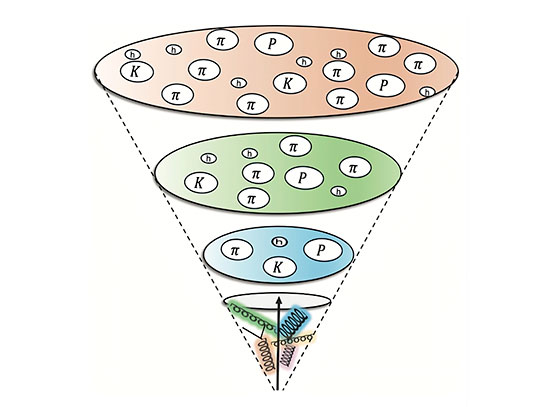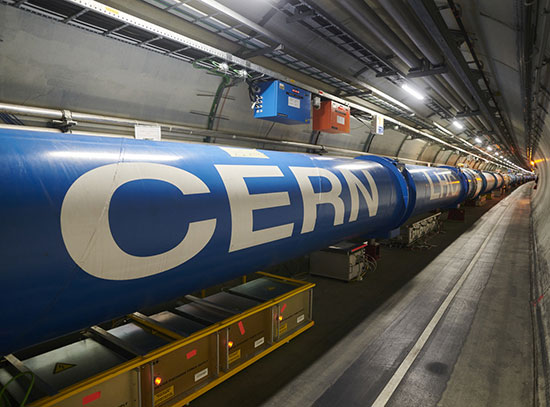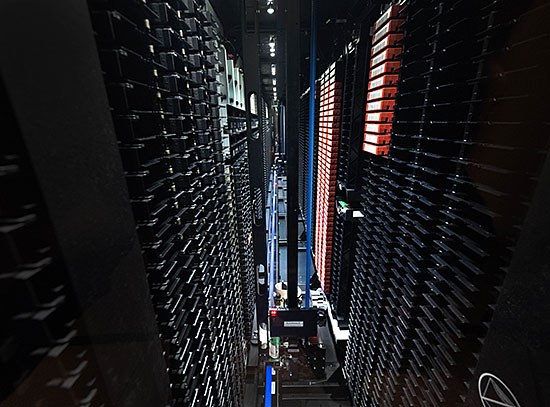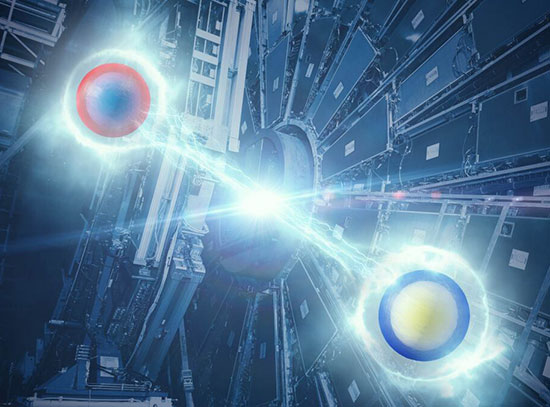By Joe Gettler
The Standard Model, Higgs Boson, and Colliding Hadrons: Huh?
BNL Physicist Srini Rajagopalan Explains in Video Series Titled 'Physics for the 21st Century'
December 21, 2011
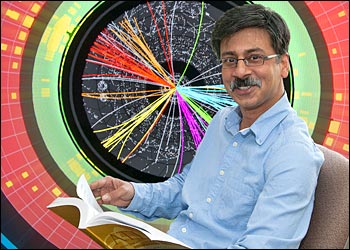
Srini Rajagopalan with data from collisions at the ATLAS Detector in the background.
Even before the big press conference at the European laboratory CERN on December 13, when scientists announced that they have narrowed their search for that Higgs boson (if it does exist), waves of predictions, rumors, and commentary about the hunt at the Large Hadron Collider (LHC) surfaced from sources ranging from Twitter to international news bureaus. Amidst all the excitement, if you still don’t quite understand what is being said of elementary particles, fundamental interactions, the Standard Model, and of course, the elusive Higgs boson, don’t worry: Brookhaven Physicist Srini Rajagopalan can catch you up.
Rajagopalan, the U.S. ATLAS deputy operations program manager-designate for the LHC, is a featured speaker in a video series, titled Physics for the 21st Century, that was developed to teach adults about advances in physics and the unanswered questions physicists are asking today. The series was funded by Annenberg Media, a division of the Annenberg Foundation, and produced by the Science Media Group at the Harvard-Smithsonian Center for Astrophysics. Howard Gordon, the current U.S. ATLAS deputy operations program manager and a Brookhaven physicist, also has a cameo in the video series.
Rajagopalan is featured in the second of 11 units, titled “The Fundamental Interactions,” and as the section begins, he exclaims enthusiastically about the ongoing operations at the LHC, “We are going where no one has gone before!”
For the past few years, Rajagopalan has managed development for both electronic hardware and software triggers to capture and record data from the nearly 20 million proton-proton collisions that occur every second in the ATLAS Detector at the LHC. Brookhaven is the host for the U.S. ATLAS collaboration, which consists of scientists from more than 40 U.S. institutions who, among other things, are sifting through the data in search of that elusive Higgs boson — a predicted yet unfound particle that theorists believe is the source of mass for some subatomic matter — and any other signals for new physics.
In 2010, Senior News Reporter for Nature Geoff Brumfiel and Science Media Group Executive Producer Alex Griswold asked Rajagopalan to join in the project. Soon after he agreed, crews arrived at Brookhaven for two days of filming. More filming at CERN followed.
“Speaking to a camera lens was a unique experience,” Rajagopalan recalled. “Sometimes I had to do a lot of takes which got frustrating, but I learned to just behave as I normally would and let the editors take care of the rest.
“It’s very important that scientists make an effort to reach out to the public and explain their work,” Rajagopalan continued. “I hope these videos educate the general public on big science, so people appreciate the importance and merit of our research and why it is so crucial to invest in science”.
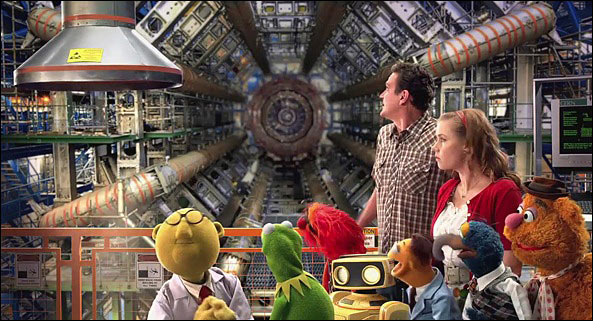
Kermit the Frog and company traveled to the ATLAS detector — which Rajagopalan discusses in the Physics for the 21st Century video series — in their newest feature film The Muppets. Image courtesy of Disney.
With the excitement from the LHC announcement on December 13 and much more to come — even the Muppets traveled to the ATLAS detector in their newest feature film — find out what the science is all about from fellow-BNLer Rajagopalan in Physics for the 21st Century.
2011-2716 | INT/EXT | Newsroom



